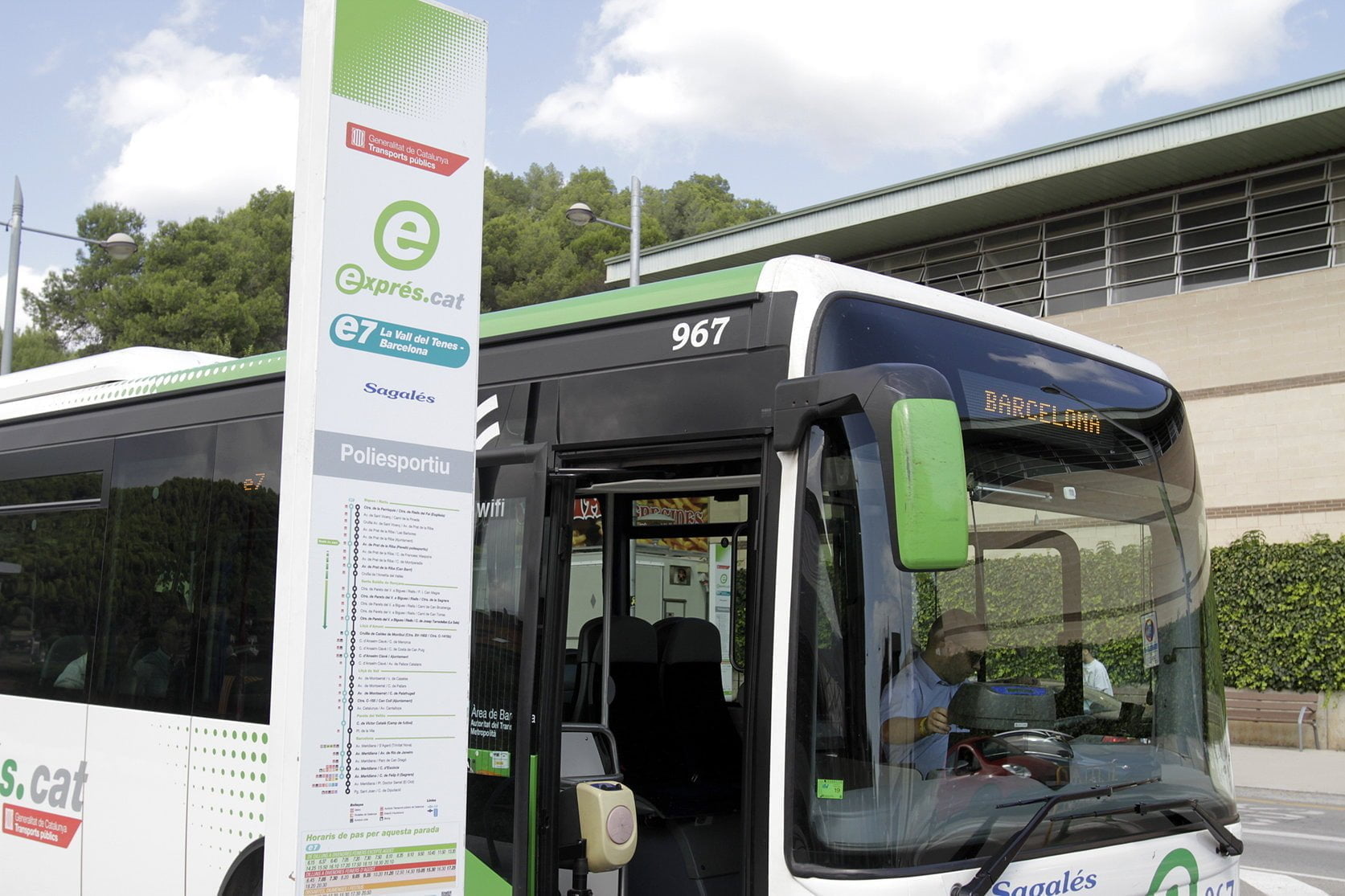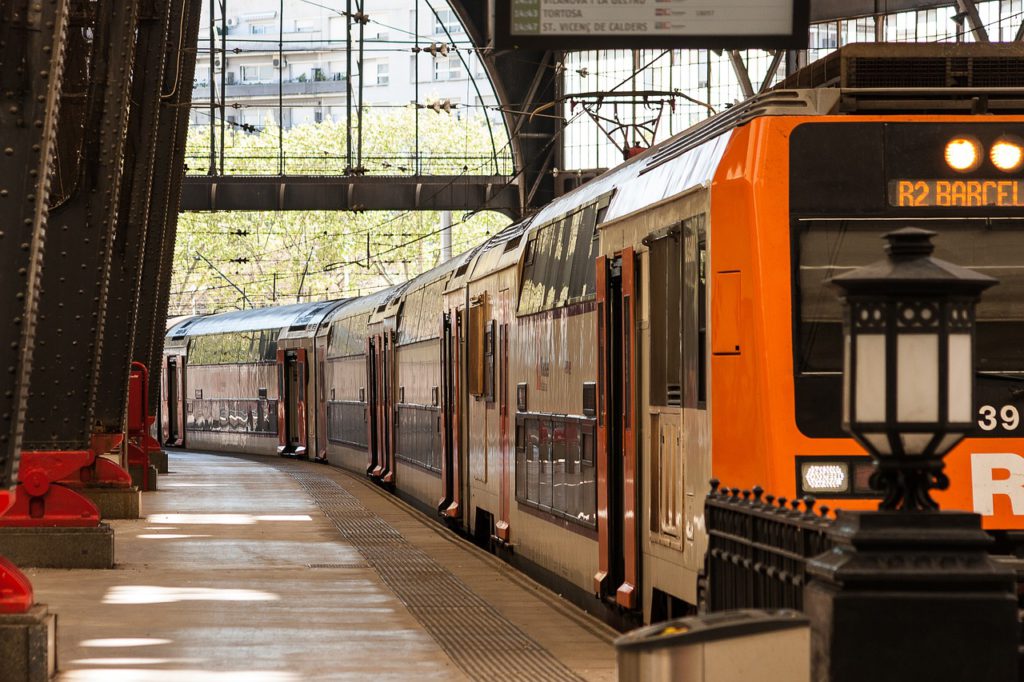Catalonia enhances services and launches new initiatives to adapt to growing express bus ridership
With express bus ridership increasing from 17.2 million to 27.4 million, POLIS member Catalonia is revamping routes, increasing frequencies, and launching new projects like BRCat and on-demand night bus stops to meet demand and enhance safety.
Catalonia started implementing its interurban express bus network, Exprés.cat, in 2012. This expansion concluded a few years ago after establishing 43 routes connecting several commuter towns with the provincial capitals. Before these routes were introduced, the equivalent non-express services had an annual ridership of 17.2 million passengers. In 2019, ridership of express services peaked at 24.2 million, and in 2023, it increased again to 27.4 million.
Interurban bus services have experienced the highest growth in Catalonia. Consequently, some routes have been modified to cope with the increased demand.
For example, the Exprés.cat e7 bus line connects Barcelona with Bigues i Riells, located 30 km north. It provides direct service via motorway to Parets del Vallès, halfway, and then continues on conventional roads to Bigues i Riells, stopping only at the main stops in each town. Until April 2024, other services (lines 302, 303, and 305) covered the full 30 km via secondary roads without entering the highway, with constant stops.
At the beginning of May 2024, the entire service of this corridor was restructured. Lines 302, 303, and 305, which covered more than 30 km by road, were eliminated to focus resources on strengthening services of the e7 and other partial routes, such as lines 320 and 330. In addition to increasing frequency, services were scheduled more evenly.
In the Lleida region, services have also been reinforced to reduce the high occupancy of buses caused by increased demand. On the Lleida e2 line, connecting five towns with a total of 17,000 inhabitants to the city of Lleida, peak-hour reinforcements have been made. The same has been done on the e3 line, which connects Lleida with Alcarràs (population 10,000), with trips now every half hour throughout the morning and midday.
In addition to these improvements, an additional €3 million will be invested to improve the Exprés.cat network, funded by the revenue from the new emissions tax for vehicles on gases and particles in the atmosphere.
On-demand stops on night buses
The Government of Catalonia launched a pilot test in February 2024 to strengthen safety on night bus services, especially for young people and women. Several stops located next to campsites and nightclubs were added to the existing NGi1 night bus line, which connects Girona and Palamós on the Costa Brava. Previously, night buses only stopped at the most central stops in each city or town, making them sometimes unsuitable for nightlife.
These new stops are only served on-demand, meaning buses follow their normal schedules and only detour to these stops if requested. Passengers need to book a ride to or from these stops in advance using an app. This app also allows users to track the position of their vehicle in real-time, avoiding unnecessary waiting at the bus stop.
This trial is part of the Clic.cat service, the brand dedicated to digitalised DRTs in Catalonia. There are currently 38 Clic.cat routes, with another 195 DRT routes to be digitalised progressively.
The new product of Catalonia for buses: BRCat
The Government of Catalonia has started a project called BRCat, which will rebuild interurban roads by adding bus lanes, bike lanes, and sidewalks between the most important neighbouring connections.
Girona (population 104,000) and Salt (population 33,000) are two neighbouring cities with urban continuity and a common public transport system. Connections between these cities are provided by three bus lines (lines 3, 4, and 9) with a combined frequency of 11 buses per hour during weekdays and an annual demand of 2.5 million passengers (2023). Most of these lines pass through a main avenue (Passeig dels Països Catalans in Salt and Passeig d’Olot in Girona) with two lanes in each direction.
This avenue will be completely rebuilt, converting half of the lanes to dedicated bus lanes and adding a bike lane. The bike lane will be diverted into a parallel street in the narrowest sections of this road. Traffic light priority for buses will be implemented. Work is expected to start by the end of this spring.
Aside from the infrastructure upgrade, the bus service will be converted to electric operation, with a frequency increase due to higher commercial speed and the purchase of additional vehicles. The first electric buses have already been delivered and started operation in April, reducing headway from 15 to 12 minutes on line 4, and from 60 to 30 minutes on line 9. Further improvements will be made once the entire electric fleet is received and the works are completed: headways will be reduced from 10 to 8 minutes on line 3, and from 30 to 15 minutes on line 9. The final combined frequency will be 17 buses per hour per direction on weekdays.
These improvements are expected to attract between 350,000 and 500,000 new passengers annually.

